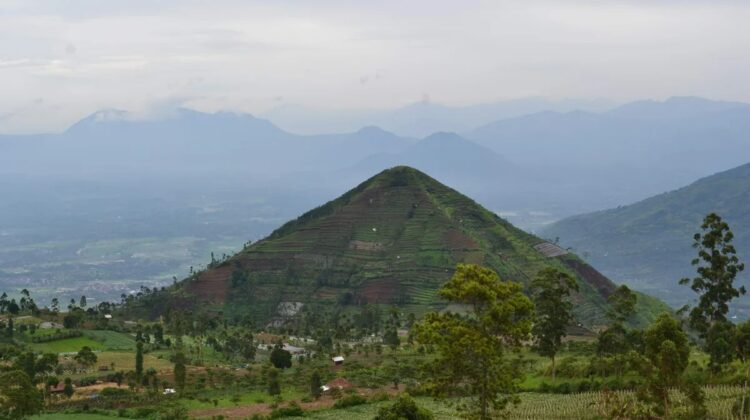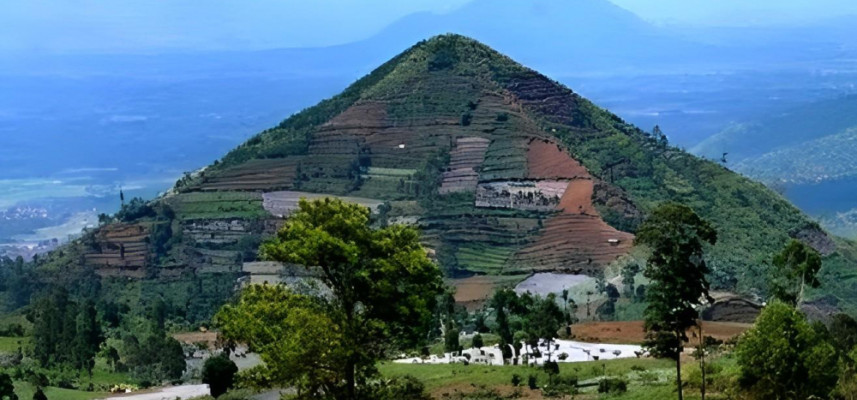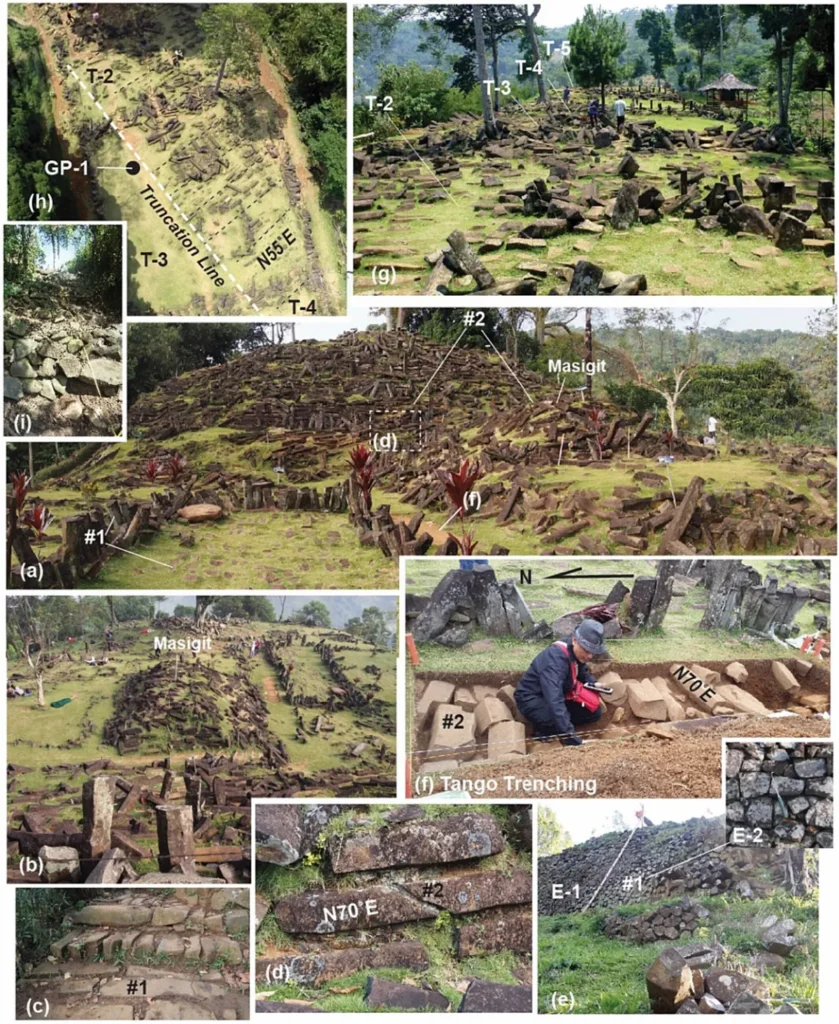
When we think of pyramids, our minds often conjure images of the iconic structures in Egypt or the grand monuments of South America. However, new research has rewritten the history books, revealing that the world’s oldest pyramid might not be where you’d expect. Nestled in the heart of Indonesia, the Gunung Padang site is challenging conventional wisdom by suggesting that it was constructed as far back as 25,000 years ago, making it the earliest known man-made conical monument.

Gunung Padang, located in the Cianjur District of West Java Province, is a megalithic complex perched atop a picturesque hill. For decades, this site was merely perceived as a natural hill, with its remarkable historical significance hidden beneath the surface. It wasn’t until 2018 that archaeologists began to theorize that the entire mound might, in fact, be an artificial creation. The name “Gunung Padang” translates to “Mountain of Enlightenment,” a moniker that now takes on new significance.
This revelation comes courtesy of a multidisciplinary team of researchers who embarked on a three-year survey of the site from 2011 to 2014. Their groundbreaking work unveiled a startling truth – Gunung Padang was not just a hill; it was, in fact, a pyramid. The researchers have recently published a detailed account of their findings, presenting concrete evidence that establishes Gunung Padang as the world’s oldest pyramid.

Image credit: ghanimurtafa/Shutterstock.com
The researchers employed various techniques, including electrical resistivity tomography (ERT), ground-penetrating radar (GPR), and seismic tomography (ST), to unveil the hill’s hidden secrets and to piece together the story of its construction. Core drillings at seven different points provided insights into the pyramid’s creation, revealing that it was built in four distinct stages over thousands of years.
The structure, reaching heights of 20 to 30 meters (65 to 98 feet), began its journey with the formation of Unit 4. Deep within the hill, this initial phase likely started as a natural lava hill, which was then meticulously sculpted into its pyramid-like form between 25,000 and 14,000 years ago.
Unit 3, characterized by columnar rocks arranged in a brick-like fashion, was constructed between 7900 and 6100 BCE. Approximately a millennium later, another builder arrived at Gunung Padang, giving rise to Unit 2, while the final phase, Unit 1, was erected between 2000 and 1100 BCE.

Image credit: Natawidjaja et al., Archaeological Prospection, 2023 (CC BY 4.0)
The mysteries of Gunung Padang don’t stop there. The researchers uncovered evidence of concealed chambers or cavities within the site, beckoning further exploration during future field surveys. Equally puzzling is the deliberate burial of the site on multiple occasions, possibly to protect its true identity.
One of the most intriguing aspects of this discovery is that it challenges long-held beliefs in anthropology. The advanced construction techniques demonstrated at Gunung Padang hint at the presence of sophisticated building practices that predate the invention of agriculture, rewriting our understanding of human development and achievement.
The evidence at Gunung Padang strongly suggests that advanced construction practices were already in place long before the advent of agriculture, an idea that challenges the conventional anthropological narrative. This site opens a window to an ancient world where human ingenuity knew no bounds, even in the absence of modern technology. It is a testament to the ceaseless curiosity of scientists and explorers, reminding us that the mysteries of our past are still waiting to be unveiled.

Leave a Reply